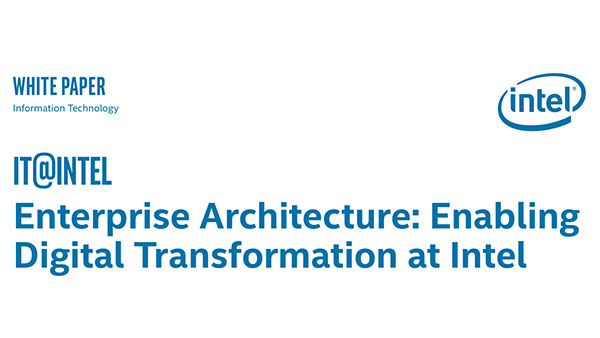Enterprise Architecture: Enabling Digital Transformation at Intel

IT Best Practices: Enterprise architecture (EA) has become essential for corporations to be successful in addressing and supporting digital transformation and business growth at a much faster pace in an ever-changing environment. At Intel, we define EA as applying technology advancements across the entire architecture ecosystem to radically change how we operate, compete, and grow across businesses and geographies.
Business models, technologies, and customer needs are changing at a break-neck pace. Intel must quickly adapt to necessary transformations (digital or otherwise) and technology disruptions to not only survive, but to thrive. Intel IT is in a unique position to support that agility—but only if we know what we have to work with and what effect changes will have.
In 2016, with a new CIO and mandate around EA, we began our journey to build an effective EA. For Intel IT, this meant that we needed end-to-end, integrated, consistent reference architectures and a long-term technology roadmap that are aligned with business needs and corporate strategies, industry and technology advancements, and supplier landscape. Now, and into the future, EA provides the following benefits: (1) Accommodate an ever-changing business landscape and industry trends, (2) place decision makers in front of a reliable representation of the enterprise to help them influence the direction of the company and the relevant processes, (3) reduce technical debt with a modern and simplified architecture, and (4) remove or reduce bureaucratic processes with governance automation.
Our EA efforts have provided a framework for digital transformation, helping to bring order to chaos.
For more information on Intel IT Best Practices, please visit intel.com/IT
Posted in:
Intel, Intel IT, IT White Papers, IT@Intel

